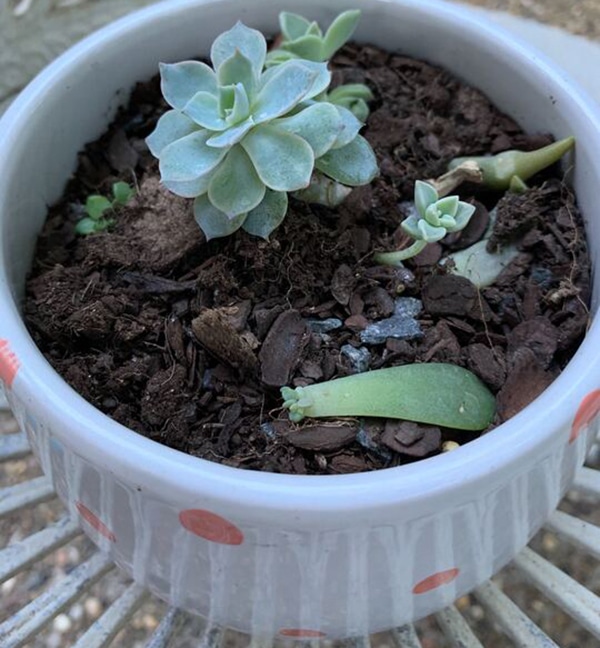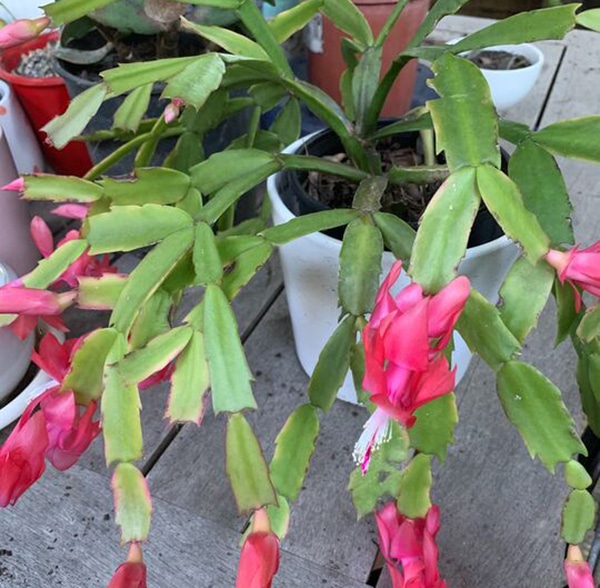A message to Christian Hull: I heard you have trouble keeping your houseplants alive. I’m here to help. Think of me as your fairy plant-mother.
In fact, for anyone who wants to fill their home with greenery, but find you can’t keep anything alive, this blog is here to help.
Here are 4 types of indoor plants almost impossible to kill. In fact, these are all plants I have personally grown in my home and managed to keep alive, despite sometimes neglecting them.
You will also find some bonus tips on what to look for when finding a new indoor plant, as well as things you can do to keep your plant happy and healthy with minimal effort.
First things first, you want to look for the right type of plant. When it comes to houseplants, not all are equal. You want a plant that is low-maintenance and works well in the space and climate you live in. Here are 3 key tips for choosing a houseplant for beginners.
3 Things to Look for When Choosing a Plant
1. Stick to dark, waxy leaves.
If you want something leafy, opt for a plant with dark and waxy leaves over those with pale and thin leaves. The waxy coating on these plants becomes a fantastic natural barrier, protecting your plant against pollutants and bacteria, as well as helping reflect hot sun rays. Thicker, dark leaves are also great at helping your plant retain moisture so you are likely to not need to water these plants as much.
2. Plants that propagate give you a second chance.
When caring for a new plant, sometimes things do not go as planned. Choosing a plant you can easily propagate or is self-seeding allows you to easily regrow the plant from a single leaf if needed so you can try again. Succulents are a great choice for this.
Simply pop some fallen leaves on top of some dirt in sunlight and in a few weeks you’ll have roots begin growing. You only need to lightly mist leaves when propagating once every week or so as they can easily take on too much water and rot.
Some gardeners swear by sticking the leaf straight into the dirt, but I prefer to wait until some new leaves begin to arrive before putting them into soil as they run the risk of taking on too much water.

4. Choose a plant that is adaptive to your climate.
Unless you live in a climate that does not change much year round, you’ll want to choose a plant that’s adaptive. Too many times have I bought a plant that has thrived during the cooler months, only to begin to suffer during the Queensland summer.
A simple change in where you keep your plants can help with this, however you’ll want to avoid plants easily shocked by temperature or environment changes, like orchids.
If you have a plant that needs sunlight, but its leaves seem to be burning or wilting, consider what type of sunlight it’s receiving. Often, the afternoon sun might be too harsh, so pop your plant somewhere where it will receive a majority of its sunlight during the morning.
4 Houseplants that are Impossible to Kill
1. Zygocactus.
Often referred to as a Christmas cactus or Winter cactus, the Zygocactus is an incredibly simple plant to care for. It can withstand neglect and still thrive.
You only need to do three simple things to keep this plant happy:
- Keep it in a sunny spot. Partial sunlight throughout the day is enough, but they love full sun.
- Pot your Zygocactus in well-draining soil.
- Water lightly every one to two weeks.
Zygocactus looks amazing in a pot or hanging basket. Pop them on your balcony, in the garden or near a window that gets plenty of sun. During the colder months, each leaf will produce a stunning flower. The flowers can range from a pale pink to deep purple in colour, depending on the variety you buy.
Want proof of how easy this plant is to care for? Here’s my own Zygocactus that was no more than a few fallen leaves a year ago. I potted them and left them in a sunny spot on my balcony and watered it no more often than every couple of weeks. Now that it has cooled down in Australia, I’ve been rewarded with stunning pink blooms.

2. Aloe Vera
Part of the succulent family, aloe vera is another plant incredibly easy to grow in a pot. People have been growing aloe vera for thousands of years, traditionally used to treat rashes, minor burns and more.
When happiest, aloe vera plants will produce plenty of long, thick green leaves and grow quickly. You can expect a plant to reach up to 100cm tall.
Like most succulents, you’ll want to give aloe vera a sunny spot near a window or on your balcony if you do not have garden space. Give this plant a drink once a week at most, ensuring to let the soil dry out between waterings.
Be careful with this plant around pets, as it can be considered toxic if ingested.
3. Terrariums.
Okay, so this one is technically not a plant, but it’s a simple and effective way to make a gorgeous indoor display of greenery. Terrariums are a micro-ecosystem in a jar. They use glass containers to house layers of stone, gravel, soil and plants. You’ll end up with something low-maintenance and can be made to suit whatever plants you have.
When it comes to making a terrarium, or buying one, here are some things to think about:
Tips for creating a terrarium:
Open vs closed.
You will want to choose an environment that works best for your plants. An open terrarium will work well for plants needing less moisture, while a closed terrarium is best for moisture-loving plants needing a more humid environment.
Containers.
You can use almost any glass container, as long as it is big enough to allow your plant to grow. Consider reusing an old vase, jar or other large glass container.
Plants.
One of the best things about a terrarium is that almost any plant looks good in them. Think moss, grasses, ferns, succulents, cacti or air plants. Localsearch Senior UX Content Writer, Sarah, reports having grown mint in a terrarium, for some odd reason.
Layers and materials.
You will want to add plenty of layers of materials such as gravel, pebbles and soil. This not only creates a proper drainage system for the terrarium, but also looks visually stunning.
Start with a base layer of activated charcoal to combat bacteria and absorb moisture. Next, add layers of gravel, sand or pebbles. Finish off with some good quality soil and your plants. Many people also add decorations such as stones, shells or mini statues.
4. Snake plant.
Dark, waxy leaves? Check. Tolerates low light? Check. The snake plant is one of the hardest to kill indoor plants, making it a popular choice.
Indirect sunlight is the best choice when deciding where to place your snake plant. However, unlike the other plants on this list, you can get away with low-light levels with the snake plant, so you can easily place it anywhere in your house or apartment if needed. If you are a pet-owner, this is another plant you will want to keep out of reach as it can be toxic.
The dark, vibrant leaves are great at retaining moisture, so you’ll need to only water your plant when the soil has dried. For the cooler months, this could mean only once every month or so, and more frequently when the weather begins to heat up.
While the above plants will prove themselves to be low-maintenance, there are some more simple steps you can take to ensure they stay healthy and happy.
How to Keep Indoor Plants Happy
1. Make sure you have the right sized pot.
When you first purchase a plant from a nursery, it will often come in a small plastic pot and is ready to be repotted. Look at the bottom of the pot and check if roots are poking out the drainage holes. If they are, this is a good indicator it’s ready to be moved into a larger pot. If you do not see roots yet, you will have another week or two before needing to do this step.
Make sure you choose a pot that’s only slightly bigger than it is currently in. Using a pot that is too big can shock the roots or take too long for the soil to dry out, making your plant more susceptible to root rot. A pot that is too small will not give any room for the roots to grow.
2. Rinse your pots before using them.
Especially if you have used a pot before, always give it a good rinse and wipe out before planting in them. This can help eliminate any disease, dust buildup or pests that may be hiding in the pot that could harm your plant.
3. Invest in the right potting mixture
Cheap potting mixtures can often cause more harm than good. There are many different types on the market and some are only suited for particular plants. For most of the plants above, you’ll want a mix that promotes drainage and includes material such as perlite.
Some plants such as succulents may also benefit from a thin layer of horticultural charcoal to help fight bacteria, before adding the soil.
4. Wipe dust of the leaves.
This is a step not many houseplant-owners do. Every few months, you’ll want to take a cloth and gently wipe off any dust that has accumulated on your indoor plants leaves. Dust build-up can block your plant from absorbing enough sunlight.
Find a local gardening supply store on Localsearch.
Find the perfect houseplant, potting mix, pots and advice.





